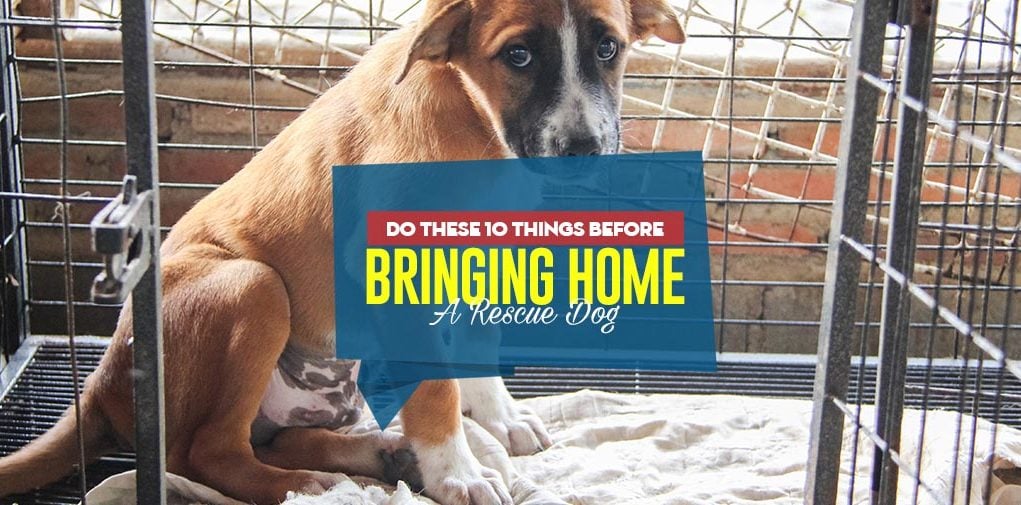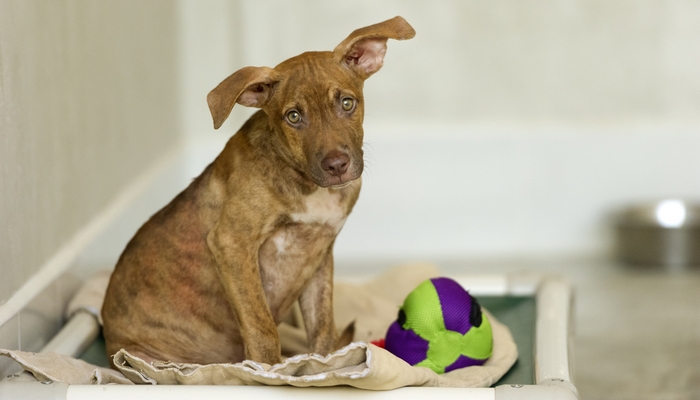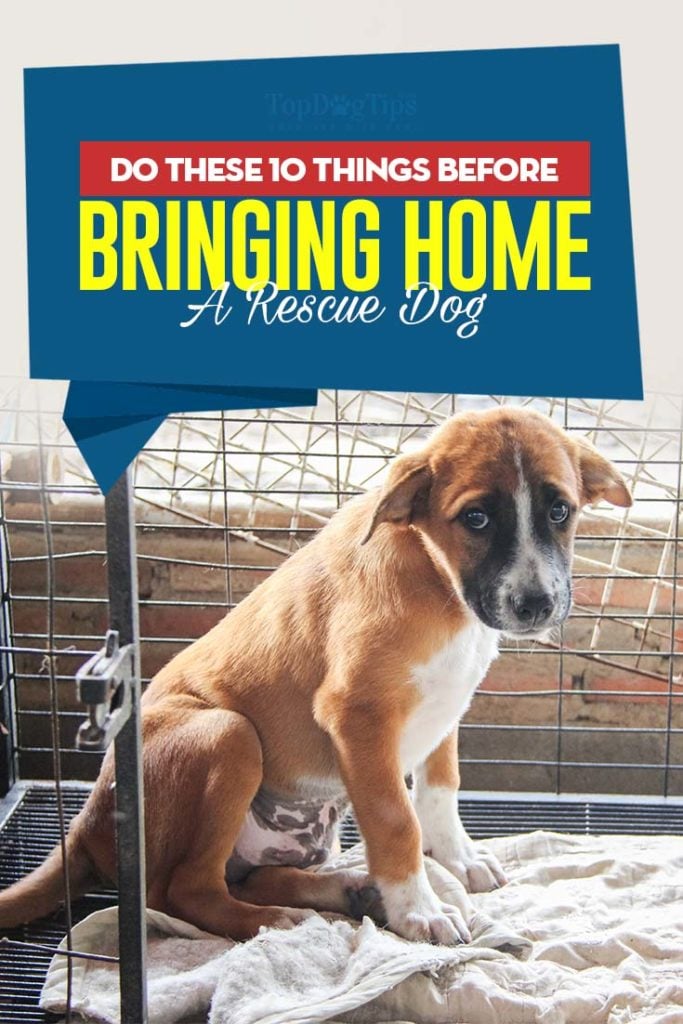If you ask pet owners who've done impulse adoption, they'll tell you from experience that this is not a good idea for neither you nor the dog. Buying or adopting a dog is something that needs to be carefully planned and thought out.
From my experience, if you go about it in an orderly and calm fashion with a set out plan beforehand, everything will go much easier. If you have been experiencing the little tickle of wanting to bring home a rescue dog, do these things first.
1. Talk to Your Family
This may seem like a routine thing to do, but lots of people like pulling “surprises”. Don’t let a living creature be the thing where you say, “Surprise, honey. Look what I got!” Even if you want to surprise one member of the family, discuss it with the other members first.
Here are some things you need to talk about:
Why do we want to rescue a dog? Cute puppies grow up, and rescue dogs may still need training. Maybe you even decide to give a senior dog a happy home for hospice care at the end of his life. Make sure whatever the reason, it is understood that this is a life-long commitment.
Where will the dog be allowed, and where won’t it be allowed? Beds, couches, dining room – all the rules need to be decided on before a dog comes home.
Who will perform daily dog care tasks? Who is responsible for bathing? Who is responsible for feeding? Who is responsible for walking? If dog duties will be shared, it is best to decide how in this conversation.
2. Decide What Kind of Dog You Want or Need
There are many breeds to adopt, and ways to adopt a dog. Deciding on what you want narrows down the places you can get them from. Make a decision on what characteristics are a must, and stick to them at the rescue or animal shelter.
This saves a lot of hassle, and even heartbreak. If you don't choose a dog that fits your lifestyle, you may end up having to return it to the shelter later on down the road. Some things to consider include:
Size – If you don’t have a lot of time to train, or you already know that you are not very good at training, you may need a small dog. One that can’t jump on the table, or knock your kids down.
Activity level – If you are athletic and want a dog that runs with you, you need to pick a breed that can keep up. Some dogs, like brachycephalic breeds, can only go for short walks when the weather isn’t hot.
How much time do you have? Maybe you work, and the kids are in school. If your house is a revolving door of people, you need to find a breed that is more independent and less needy.
3. Find a Reputable Animal Rescue Facility
After you decide the type of dog you want, you can start looking at animal shelters or reputable breeders. You may just want a mutt, and are fine with any age or size of a dog. Those can be found at your city pound and you'll be helping by adopting a dog that is statistically less likely to get a home.
If you want a special breed, you can still check your local shelters (pure breeds are in pounds all the time), but you may need to find a rescue facility that caters to that specific breed.
Some rescue groups have no brick-and-mortar kennel. All dogs are fostered in the homes of volunteers. These dogs usually have some training. If training is important, look for one of these types of shelters. These kinds can also usually give you more information about the dog’s personality.
A reputable facility usually has adoption fees. I have worked with a few rescues, and none charged over $100 or so. They need to charge enough to keep the shelter going, but they aren’t out to make a buck. If they are charging more than a couple hundred dollars and have mainly puppies and young dogs, I would do more research to make sure there isn’t something more sinister going on.
Ask for vet records, spay certification and vaccination records. A legitimate rescue will have all basic vet care up to date. You may want to rescue a dog from a bad rescue, people do it, but it needs to be right for you.
A dog adopted from a disorderly rescue may come with behavior and health problems. Before you do this, you need to decide if you have the time, patience, and money to help a dog that may have more issues than most. Finally, you can also go with a legitimate breeders which is going to be more expensive.
4. Learn About the Dog’s History
In some rescue facilities, you will get to learn a lot about a specific dog's history. However, some won’t have as much. This varies depending how long the rescue has had the dog, where the dog is kept, or if the dog was an owner surrender.
That’s fine, but get as much information as you can. Some of the most important things to ask about are:
Behavior – You can ask things about behavior like “How is the dog around cats?”, “Does the dog like kids?”, or “Is the dog friendly with the staff?”
Prior training – You can ask things about training like “Have they been housetrained in the past?”, “Do they know how to walk on a leash?”, or “Do they soil their kennel?”.
Personality – If it is something that you and your family decided was an important quality, stick to it. There are plenty of dogs to be rescued, and when you find the one with the qualities you need, the match has a much higher chance of success.
5. Remove Poisonous and Breakable Items
Now it's time to prepare your house. Even if the dog has been trained at a foster home, they may temporarily lose some of that training in the stress of the move. Anything poisonous needs to be removed from where the dog is allowed to go.
In fact, you need to completely dog-proof your home. Your new addition may get curious in his new environment, so anything dangerous or breakable should also be put away.
For example – plants. Look at this list and note it down, because dogs chew on plants. They eat grass, weeds, bushes – anything really. Dogs also do not know what is poisonous to them. Plants like lily, holly, and more are toxic to dogs. These harmful plants need to be removed from the areas the dog will be going.
Any chemicals (such as medicine, household products and cleaning supplies) will also need to be put up where the dog can’t reach them. Just because you don’t think that it is a problem because it smells bad, doesn’t mean your new dog won’t find it interesting to try to chew on or ingest it. Consider investing in a dog-proof trash can to prevent your new pooch getting into garbage, too.
6. Get a Tether or Dog Crate for the Car
You should never let dogs roam free in the car, which is hazardous for both you and the dog. Many accidents occur every day from people driving with their dogs unrestrained. Statistics show how this results in injuries and even deaths of drivers, pedestrians, and the dog.
Restrain your dog in a car; the first time – every time.
You can use booster seats or pet-friendly seat belts or tethers which work just like the tethers on a child seat. They are used in combination with a harness, some of which have been crash tested. Crates are another great option to keep a dog safe in a vehicle. Hard sided crates are recommended for travel, but it depends on your pet and the kind of trip. There are many travel crates that are perfect for long trips.
7. Make a Vet Appointment
Your dog may need vaccinations, medicines or just a check-up. Get the appointment scheduled before you pick your dog up that way you can get her in as soon as possible.
Dogs housed in shelters usually get a highly contagious illness called Kennel Cough. They can even get it from a vet’s office. Shelters and rescues usually have medicine for this, but your dog may not have been displaying symptoms yet. You will want to have your pup checked out for this.
Bring the shot records and other vet records that you got from the shelter to your regular vet. Then she can know exactly what may be needed. Even if your rescue dog isn’t acting sick, they still need to be checked for worms and other parasites. Your vet can then help you decide the right treatment for your situation.
8. Set Up Your Dog’s Area in the House
You want everything to be ready when your fur-baby gets home. It is recommended that you keep the dog on a leash the first time he comes into the home. You will show the dog around, and then take the leash off when he is in his area.
For now, to reduce stress, keep the food and water bowls, your dog's bed, and any toys in the same area. You can change it later when your dog is settled in and used to the new home.
Ask for food from the dog’s rescue facility or what type of food they were feeding. That way you can keep the new dog on the same food, or slowly introduce another one.
Ask about any special toys or blankets the dog had as well. He will feel more secure if he has something familiar with him. Don’t wash it until your pooch has had a couple weeks to settle in.
9. Walk the Dog Around the Block
When you come home, don’t go straight into the house and take the leash off. You want to take your new canine family member around the block first.
This serves several purposes:
- A nice walk allows your dog to get out some of that nervous energy.
- Your pup will probably need to pee. In fact, be prepared for more frequent urination and in house “accidents” for the first couple of weeks or so.
- This walk allows your pet to learn the sights, sounds, and smells of his new neighborhood.
10. Don’t Overwhelm Your New Dog with Guests
Your dog will have lots of emotions and nervousness when it gets to its new home. You don’t want to have lots of people around running up to pet him. Same goes for other animals. Introduce her to the other family members in a calm, orderly fashion.
Don’t let friends and family (that are not in the household) come over for several days after bringing your rescue dog home. Then just have a few over at a time until your dog is well socialized and relaxed.
Have family in the front yard ready to meet the pooch after your walk around the block. They should come up one at a time. Have them walk up calmly and slowly. Let the dog sniff their hand first, and then they can give a little scratch behind the ears.
If you have other dogs, they should be kept on a leash as well. Let them get close so they can smell each other. If things are going well, they can even get close enough to touch.
READ NEXT: How To Introduce Your Puppy To An Existing Dog





















